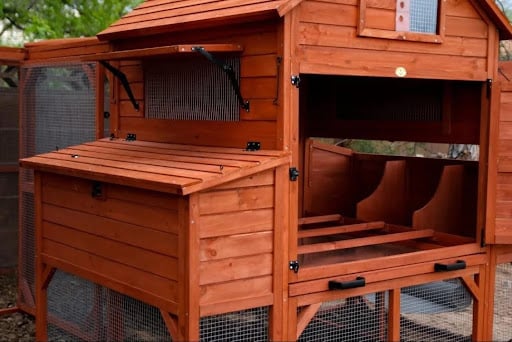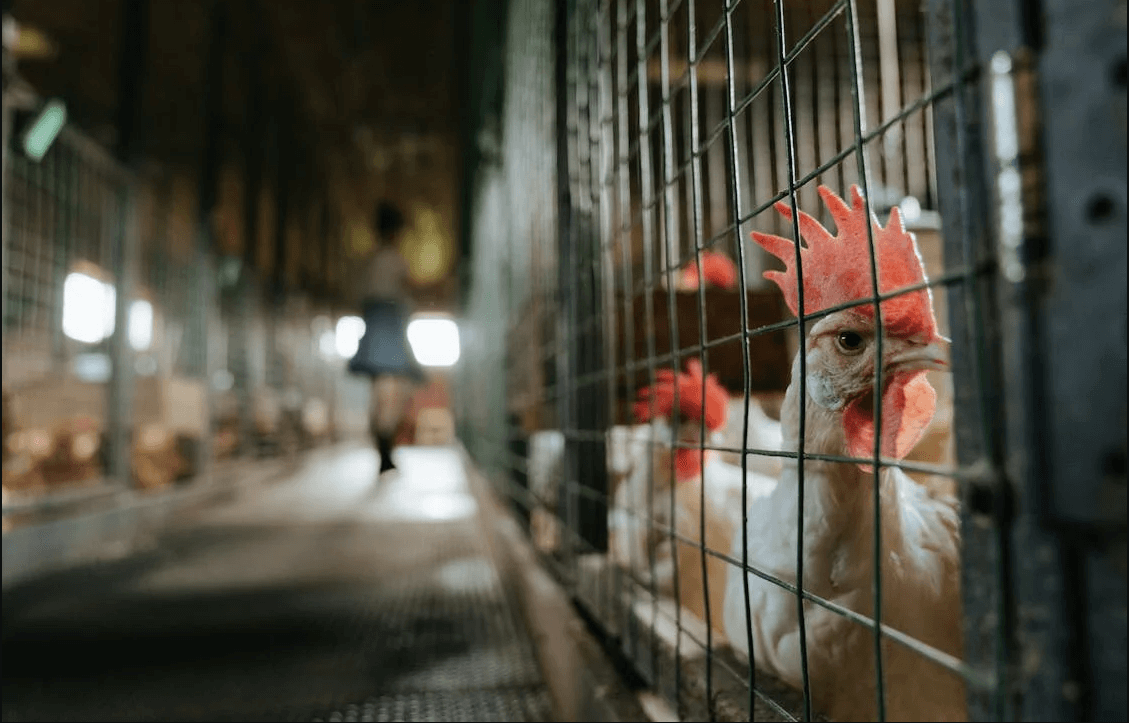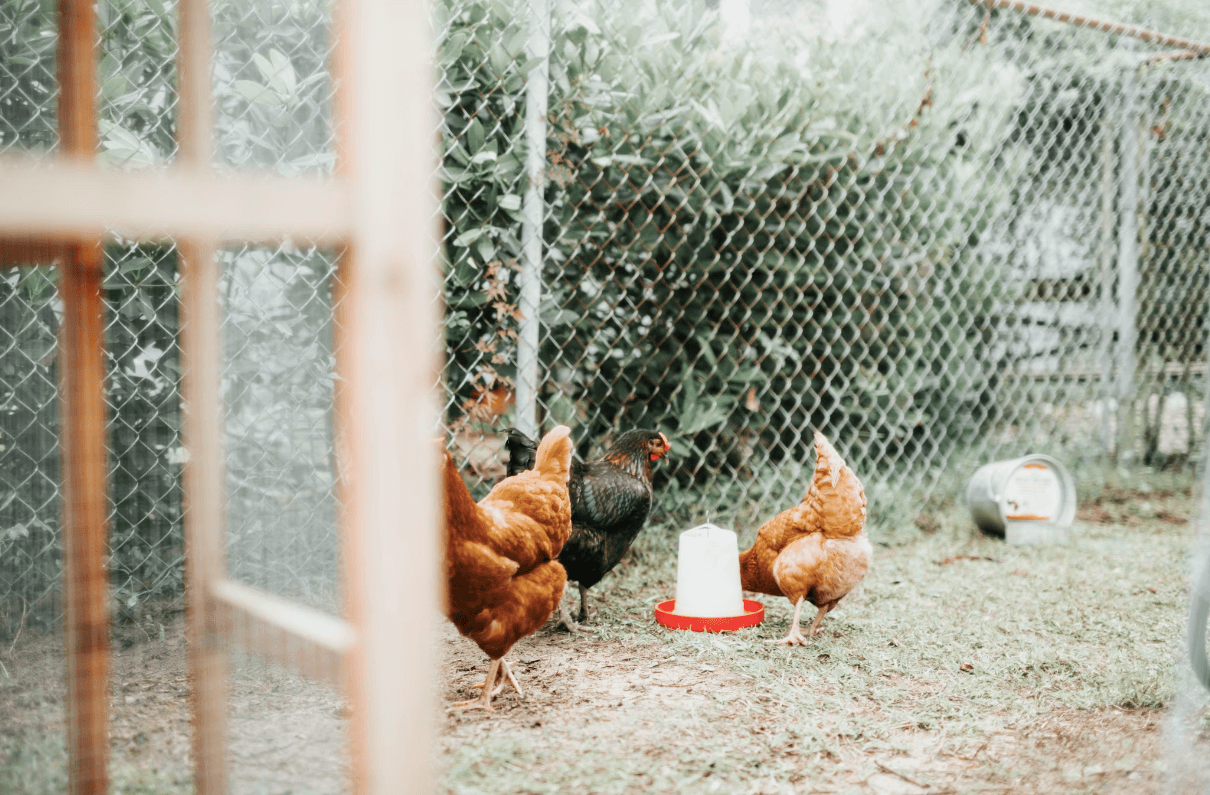It takes plenty of nurture and care to raise a baby chick from egg to hen. Seeing the process through involves lots of trial and error and the reality is you can lose some of your precious flock.
Baby chicks are quite frail creatures, so to make them thrive, you need to create optimal conditions including but not limited to providing—the right food, bedding, and a heat source to keep them warm and dry.
Your chicks will need this extra care until they’re old enough so they’re ready to leave the brooder and join their older feathered friends in the chicken coop enclosure. But when is this time exactly and how long do chickens need to be under a heat lamp in the brooder?
Today the poultry experts here at the Chicken Coop Company answer these important questions alongside tackling the specifics of how to maintain the right temperature for your birds to grow big and strong.
What Is the Purpose of a Heat Lamp for Chickens?
A heat lamp is a heat source used in chicken brooders to create the optimal temperature needed for young birds to develop and grow. For comparison, a heat lamp is as critical for the development of baby chicks as an incubator is for human preemies—they cannot thrive otherwise.
According to the website of the University of New Hampshire:
"Newly hatched chicks cannot control their body temperature in the first few weeks of life. It is essential that they have a source of heat."
That said, leaving your birds unprovided for in this vulnerable stage can lead to slower development. Also, the cold infection can spread through your brooder, and having your birds sick from the cold can sometimes take your entire flock down.
When Can I Stop Using a Heat Lamp for Chicks?
When do chicks not need a heat lamp? According to the NSW Department of Primary Industries, the timeline your chicks will need a heat lamp will depend on the seasonal temperatures and the type of housing—but this typically falls within the continuum of 3 to 6 weeks.
On average, your chicks will need supplementary heat as soon as they hatch and throughout the 'brooding period', which ends roughly at 6 weeks.
But how does this translate to practical terms and how do these timeframes relate to different housing conditions? Let’s illustrate with a few examples. Housing your chicks in a garage or a barn under 60 degrees Fahrenheit? You’ll need a heat lamp until your birds are fully feathered at six weeks old.
Planning to keep your chicks in home conditions? In a home environment (or even outdoors at around steady 75 degrees), your chicks won’t need a heat lamp past week four.
That said, it's critical to create the right temperature conditions for your baby chicks until they can thermoregulate on their own. This is exactly what we address in the sections below.
See If You Chickens Need Brooder Temperature Adjustments
The Million Dollar Question: Are Your Chickens Hot or Cold?
Fact: Each moment your baby chick is too cold, its health declines a bit further—that’s how time-sensitive it is to keep your brooder temperatures regulated. The situation is no different when it comes to overheating—get your baby chicks too hot and they’ll soon show signs of losing weight and fall behind in their development.
In these situations, you must get the right brooder temperatures. Your chicken brooder temperatures can be just right or they can be an epic fail, but how do you tell one from the other? There are two surefire ways to do so:
- Install a thermometer within the brooder to monitor temperature, then use a baby chick temperature chart (provided below) to adjust the right temperatures.
- Just watching your newly-hatched chicks behave will tell you whether they’re warm enough or not. The rule of thumb is as follows:
- If your chicks are cold, they’ll be huddling together under the heat lamp. If they’re too hot, they’ll be moving as far from the heat lamp as the brooder ring allows them.
- If your brooder is too drafty, your chicks will flock to one side of the brooder to escape the draft.
- If your chicks are comfortable, they’ll be happily pecking around the brooder, evenly distributed across the area.
Tips to Help Maintain the Right Temperature In Your Brooder
Now that you know how to make sense of your baby chicks’ behavior so you can keep them warm enough, let’s transition to an equally pressing question of how to maintain the right temperature in your brooder. Below are the nuts and bolts of getting your chicken brooder temperatures right.
Keep Appropriate Temperatures According to Your Chicks’ Age
To raise your baby chicks properly it’s important to adjust the temperature in your brooder relative to your chicks’ maturity and age. But what temperature exactly should a chicken brooder be? TThe brooding temperature forday-oldd chicks should be 93 °F, but to create favorable temperature conditions as your chicks grow, keep lowering the temperature by roughly 5 degrees each week.
When setting the temperature in your brooder, make sure that you measure the temperatures at the level of your chickens’ backs, this is the most appropriate way. Also, you can measure about 50 mm above the litter.
The recommended temperatures for poultry chicks reduce as the weeks progress, so it’s best to follow the baby chick temperature chart below (we’ve extracted information from the Colorado State University Extension).
Choose a Reliable Heat Source to Keep Your Brooder Temperature Just Right
Choosing a reliable heat source for your brooder mainly revolves around deciding between bulbs vs. heating plates. And while bulbs (or heat lamps) do have their advantages (they’re easy to install and inexpensive) they can be a serious fire hazard for your chicks. This especially goes for DIY lamps as some of the materials used for making them can be highly flammable.
That said, ideally, you should go for a heat source that’s able to provide adequate brooding temperatures without posing a threat of fire. Heating plates (like our chicken coop heater shown in the image below) are one such solution to this problem. They come with fewer chances of a fire hazard as they have lower surface temperatures (up to 125°F). They can also be raised up to lower the heat as your chicks get older and need less heat.
Also, our Big Chicken Co Coop Heater provides a shut-off switch that automatically shuts off the unit if temperatures get too high.
Below are some extra tips and precautions to protect your chicks from fire hazards:
- Place the heating plate at least 6 inches away from the bedding.
- Do not use seed starting mats as bedding for your brooder.
- Always monitor your brooder temperatures.
- Inspect the condition of your heating plate regularly.
- (If using heat lamps) To position a heat lamp for chicks properly, never hang them closer than 12 inches to bedding.
Other Considerations: Space Adjustments
Mastering chicken breeding basics requires understanding the space requirements your chicks need to thrive. The space you give them will also dictate your heating strategy.
Namely, if your chicks have space issues, they may struggle to regulate their body temperature, resulting in health problems such as overheating or hypothermia.
That said, be mindful of providing adequate space in your brooder—there’s a general agreement among the experts that this space should be 3-foot-by-2-foot for every 20 new chicks (or roughly 1/2 square foot per chick).
Still, not all chicks are equal and each breed will call for different space requirements. That's why you should be acquainted with your chicks’ expected size as they grow older.
Over to You
So, now you know how long your chicks need to be under a heat lamp, when chicks stop needing heat, and the other important know-how related to keeping your chicks warm, dry, and healthy.
Knowing how to provide your chicks with a warm place to nestle will help you set them up for a bright future. Until they develop their feathers at around eleven weeks old, chances are your fluffy friends will depend on you to keep them warm.
Also, chances are that as a chicken keeper, you will never stop learning. Need some more tips and tricks to support you on your chicken keeping journey? Feel free to check out our blog pages.





